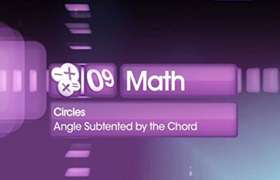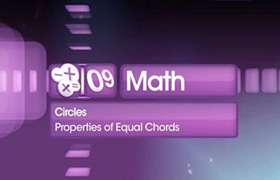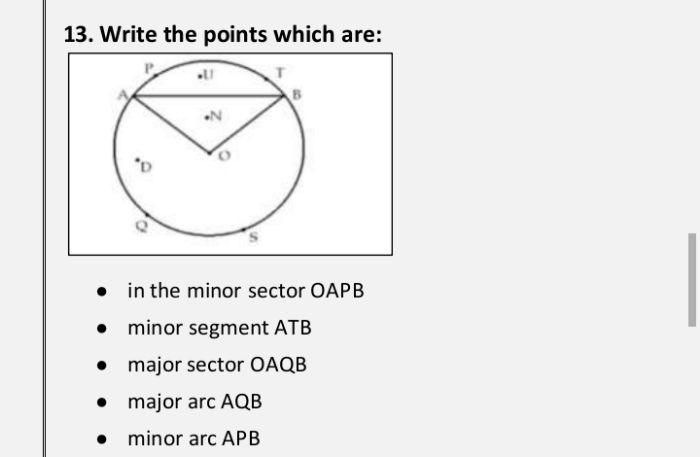CBSE Class 9 Answered
Prove that the angle bisectos of a cyclic quadrilateral forms another quadrilateral which is also cyclic.
Asked by | 21 Feb, 2013, 10:58: PM

ABCD is a cyclic quadrilateral
?A + ?C = 180° and ?B + ?D = 180°
(?A + ?C)/2 = 90° and (?B + ?D)/2 = 90°
?A + ?C = 180° and ?B + ?D = 180°
(?A + ?C)/2 = 90° and (?B + ?D)/2 = 90°
x + z = 90° and y + w = 90°
In ?AGD and ?BEC,
x + y + ?AGD = 180° and z + w + ?BEC = 180°
?AGD = 180° (x+y) and ?BEC = 180° (z+w)
?AGD + ?BEC = 360° (x+y+z+w) = 360° (90+90) = 360° 180° = 180°
?AGD+?BEC = 180°
?FGH+?HEF = 180°
The sum of a pair of opposite angles of a quadrilateral EFGH is 180°.
Hence EFGH is cyclic
In ?AGD and ?BEC,
x + y + ?AGD = 180° and z + w + ?BEC = 180°
?AGD = 180° (x+y) and ?BEC = 180° (z+w)
?AGD + ?BEC = 360° (x+y+z+w) = 360° (90+90) = 360° 180° = 180°
?AGD+?BEC = 180°
?FGH+?HEF = 180°
The sum of a pair of opposite angles of a quadrilateral EFGH is 180°.
Hence EFGH is cyclic
Answered by | 22 Feb, 2013, 04:51: PM
Application Videos
Concept Videos
CBSE 9 - Maths
Asked by indu.suresh1220 | 27 Dec, 2023, 11:12: PM
CBSE 9 - Maths
Asked by subbusuchi1978 | 05 Nov, 2023, 10:24: AM
CBSE 9 - Maths
Asked by rameshsonkar1234ramesh | 21 Dec, 2022, 11:03: PM
CBSE 9 - Maths
Asked by sdmbotch1123 | 17 Dec, 2022, 09:39: PM
CBSE 9 - Maths
Asked by geetaradha8835 | 16 Dec, 2022, 07:59: PM
CBSE 9 - Maths
Asked by chalkekalyani80 | 06 Mar, 2022, 11:25: AM
CBSE 9 - Maths
Asked by sangeetabharti123456789 | 22 Feb, 2022, 09:01: AM
CBSE 9 - Maths
Asked by manognareddy.p28 | 25 Jul, 2021, 12:52: PM
CBSE 9 - Maths
Asked by Samidhaindulkar133 | 11 Mar, 2021, 04:03: PM













